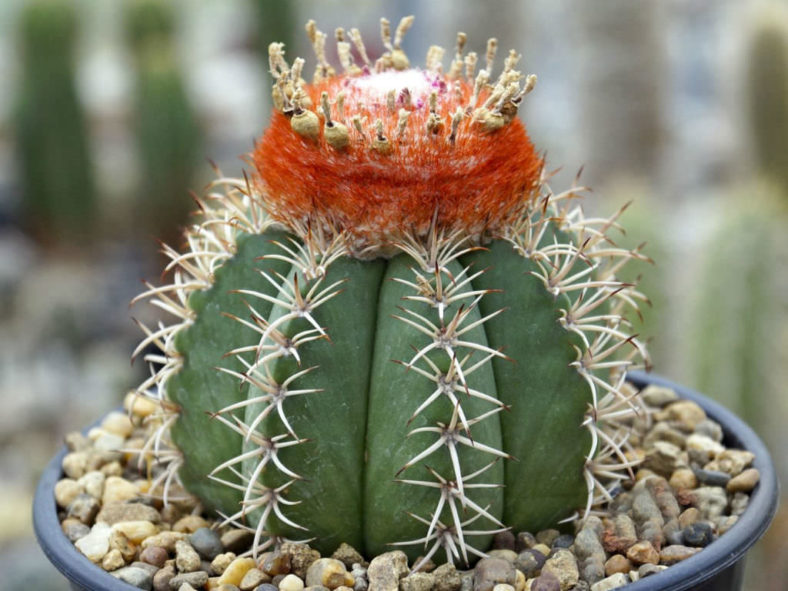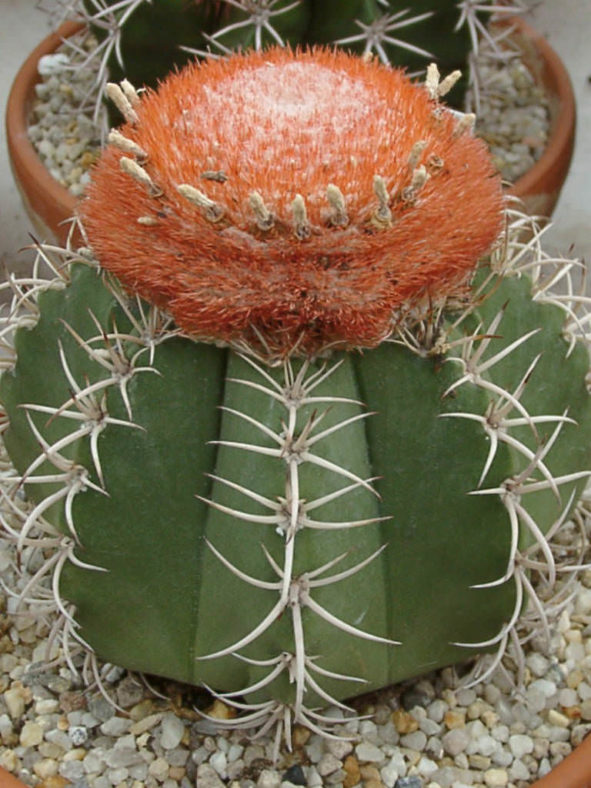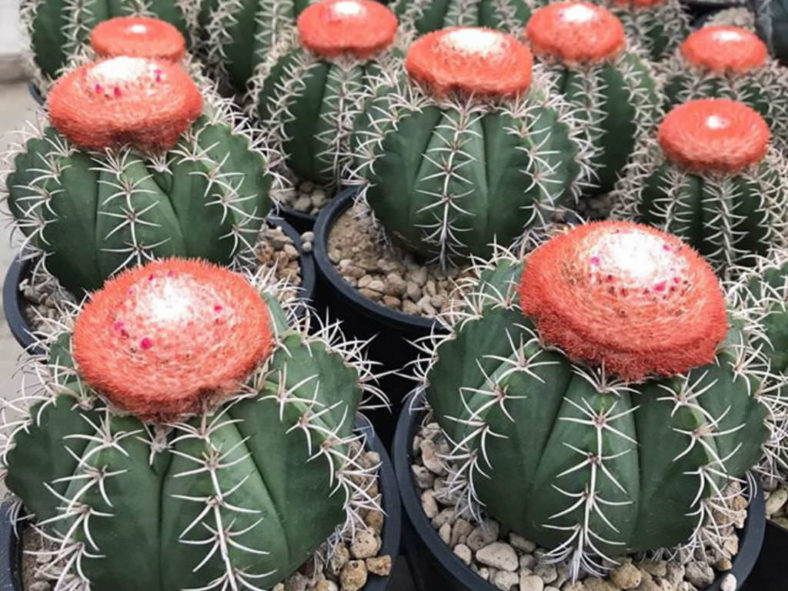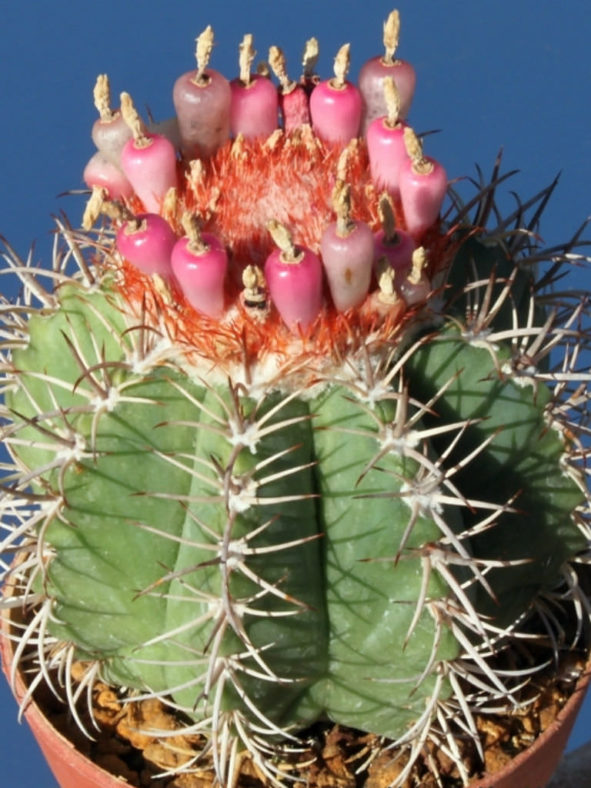Scientific Name
Melocactus matanzanus Léon
Common Name(s)
Dwarf Turk's Cap Cactus, Turk's Cap Cactus
Synonym(s)
Melocactus actinacanthus
Scientific Classification
Family: Cactaceae
Subfamily: Cactoideae
Tribe: Cereeae
Genus: Melocactus
Etymology
The specific epithet "matanzanus" (pronounced "mah-tan-ZAH-nus") refers to the Cuban province of Matanzas, where this species was first found.
Origin
Melocactus matanzanus is native to north-central Cuba. It is found in coastal scrublands on serpentine outcrops among low xerophytic vegetation.
Description
Melocactus matanzanus is a small cactus with a spherical or slightly depressed, usually solitary stem with an attractive dense mass of areoles covered with white wool and reddish-brown bristles at the tip. It is one of the smallest species that produces cephalium. The stem can reach a diameter of 3.6 inches (9 cm) and has 8 to 9 (rarely up to 13) ribs. The spines are brownish-gray or white and can measure up to 2 inches (5 cm) long. Each areole bears one central and 7 to 8 radial spines. The cephalium is globose to shortly cylindrical and will only grow after the stem reaches a certain age. It can get a height of 3.6 inches (9 cm) and a diameter of 2.4 inches (6 cm).
The flowers are rose-pink to carmine and appear in a ring at the top of the cephalium in mid-summer. They can reach a length of about 2 inches (5 cm).

How to Grow and Care for Melocactus matanzanus
Hardiness: USDA hardiness zone 10a to 11b: from 30°F (-1.1°C) to 30°F (-1.1°C).
Melocactus is a somewhat finicky cactus with unusual requirements. They shouldn't be allowed to dry out completely, even in winter. They can suffer from soil composition, drainage, water levels, sun exposure, and other factors that are difficult to control. Therefore, these plants are best for growers who have already successfully cultivated cacti. Establish a balance with good aeration, matched by ample water and good soil, and good drainage, and these plants should continue to grow. If grown successfully, their unusual tops make them among the most beautiful desert cacti.
Notably, Melocactus prefers to be fairly compact, so keep them in a container that slightly constricts their roots. Repotting them at the beginning of the growing season is a good idea until they form a cephalium and the body stops growing. At this point, they should be repotted like other cacti.
See more at How to Grow and Care for Melocactus.
Links
- Back to genus Melocactus
- Succupedia: Browse succulents by Scientific Name, Common Name, Genus, Family, USDA Hardiness Zone, Origin, or cacti by Genus
Photo Gallery
Click on a photo to see a larger version.


